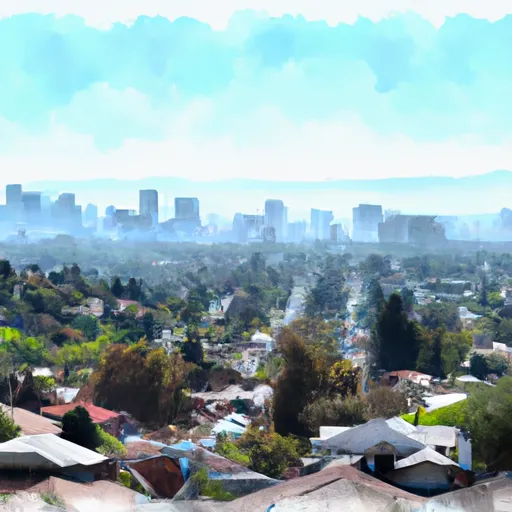-
 Snoflo Premium
Snoflo Premium
Get unlimited access to all our content
With no Ad interruptions! - Start Your Free Trial Login with existing account
Santa-Ana-Height
Eden Index
Climate
8.9
•
Recreation
4.8
•
Community
2.5
•
Safeguard
5.9/10

Santa Ana Heights is a neighborhood located in Orange County, California. It experiences a mild Mediterranean climate, characterized by warm, dry summers and mild, wet winters. The average temperature ranges from 50°F to 80°F throughout the year, with July being the warmest month and December the coolest. The region is renowned for its abundant sunshine and low humidity.
As for hydrology constituents, Santa Ana Heights benefits from its proximity to the Pacific Ocean. The neighborhood is situated near the Upper Newport Bay, which provides a thriving estuary ecosystem that supports numerous aquatic species and migratory birds. Additionally, the area has access to several creeks and channels that contribute to the hydrological cycle in the region.
Outdoor recreation opportunities in Santa Ana Heights are abundant. The neighborhood is close to the Upper Newport Bay Nature Preserve, offering various activities like hiking, biking, and birdwatching. The adjacent Newport Back Bay also provides opportunities for kayaking, paddleboarding, and sailing. Moreover, the nearby Pacific Ocean offers stunning beaches for swimming, surfing, and sunbathing, making Santa Ana Heights an ideal location for outdoor enthusiasts.
What is the Eden Index?
The Snoflo Eden Index serves as a comprehensive rating system for regions, evaluating their desirability through a holistic assessment of climate health, outdoor recreation opportunities, and natural disaster risk, acknowledging the profound impact of these factors on livability and well-being.
Climate Health Indicator (CHI): 8.9
Santa-Ana-Height receives approximately
339mm of rain per year,
with humidity levels near 75%
and air temperatures averaging around
18°C.
Santa-Ana-Height has a plant hardyness factor of
10, meaning
plants and agriculture in this region tend to thrive here all year round.
By considering the ideal temperature range, reliable water supplies, clean air, and stable seasonal rain or snowpacks, the Climate Health Indicator (CHI) underscores the significance of a healthy climate as the foundation for quality living.
A healthy climate is paramount for ensuring a high quality of life and livability in a region, fostering both physical well-being and environmental harmony. This can be characterized by ideal temperatures, reliable access to water supplies, clean air, and consistent seasonal rain or snowpacks.
Weather Forecast
Streamflow Conditions
Santa Ana
Area Rivers
Santa Ana
Snowpack Depths
Santa Ana
Reservoir Storage Capacity
Santa Ana
Groundwater Levels
Recreational Opportunity Index (ROI): 4.8
The Recreational Opportunity Index (ROI) recognizes the value of outdoor recreational options, such as parks, hiking trails, camping sites, and fishing spots, while acknowledging that climate plays a pivotal role in ensuring the comfort and consistency of these experiences.
Access to outdoor recreational opportunities, encompassing activities such as parks, hiking, camping, and fishing, is crucial for overall well-being, and the climate plays a pivotal role in enabling and enhancing these experiences, ensuring that individuals can engage in nature-based activities comfortably and consistently.
Camping Areas
| Campground | Campsites | Reservations | Toilets | Showers | Elevation |
|---|---|---|---|---|---|
| Chino Hills - State Park | 20 | 480 ft | |||
| Los Alamitos Army Military | None | 25 ft | |||
| Crystal Cove State Park - Moro Campground | 57 | 126 ft | |||
| Bolsa Chica State Beach | 57 | 12 ft | |||
| Seabreeze at Seal Beach Military | None | 15 ft | |||
| Bohelli Regional Park | None | 1,107 ft | |||
| Sunset Vista RV Park | None | 19 ft | |||
| Doheny State Beach | 122 | 17 ft |
Catastrophe Safeguard Index (CSI):
The Catastrophe Safeguard Index (CSI) recognizes that natural disaster risk, encompassing floods, fires, hurricanes, and tornadoes, can drastically affect safety and the overall appeal of an area.
The level of natural disaster risk in a region significantly affects safety and the overall livability, with climate change amplifying these risks by potentially increasing the frequency and intensity of events like floods, fires, hurricanes, and tornadoes, thereby posing substantial challenges to community resilience and well-being.
Community Resilience Indicator (CRI): 2.5
The Community Resilience Indicator (CRI) recognizes that education, healthcare, and socioeconomics are crucial to the well-being of a region. The CRI acknowledges the profound impact of these elements on residents' overall quality of life. By evaluating educational resources, healthcare accessibility, and economic inclusivity, the index captures the essential aspects that contribute to a thriving community, fostering resident satisfaction, equity, and social cohesion.

